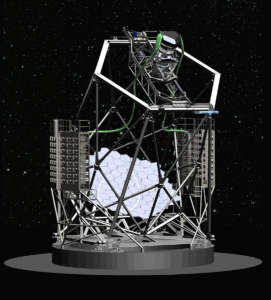Galaxy Goldmine, including 50 thousand distant galaxies, revealed in HETDEX’s first publicly released source catalog
April 26, 2023
Astronomers have barely scratched the surface of mapping the nearly endless stars and galaxies of the heavens. Using supercomputers, researchers with The University of Texas at Austin have now revealed the locations of more than 200,000 new astronomical objects. Their goal is to map even more and use that knowledge to predict the ultimate fate of the universe.
The Hobby-Eberly Telescope Dark Energy Experiment (HETDEX) has scanned the dark skies of the Davis Mountains in West Texas since 2017 with a keen eye toward capturing spectroscopic data on Lyman-alpha frequency light from neutral hydrogen emission in galaxies over 10 billion light-years away. These galaxies emit a signature wavelength of light that signals the intense creation of new stars.

For the first time, the researchers have cataloged astronomical objects — mapping over 51,863 Lyman-alpha-emitting galaxies at high redshift; 123,891 star-forming galaxies at lower redshift; 5,274 nonemission line galaxies at low redshift; and 4,976 active galactic nuclei (AGN) — bright spots that signal the presence of black holes.
Check out related media coverage
https://news.utexas.edu/2023/02/09/hobby-eberly-telescope-reveals-galaxy-gold-mine-in-first-large-survey/
https://www.kxan.com/news/science/space-just-got-bigger-scientists-add-200k-objects-to-universal-map/
MEDIA CONTACT
Jorge Salazar
Texas Advanced Computing Center
p: 512-471-3980
e: jorge@tacc.utexas.edu
